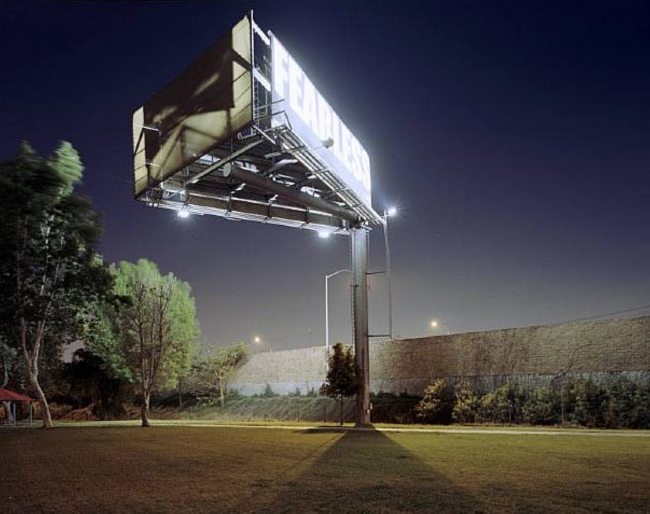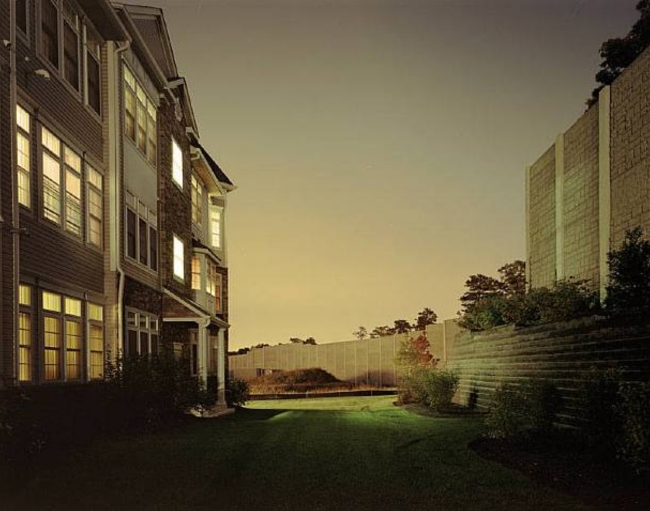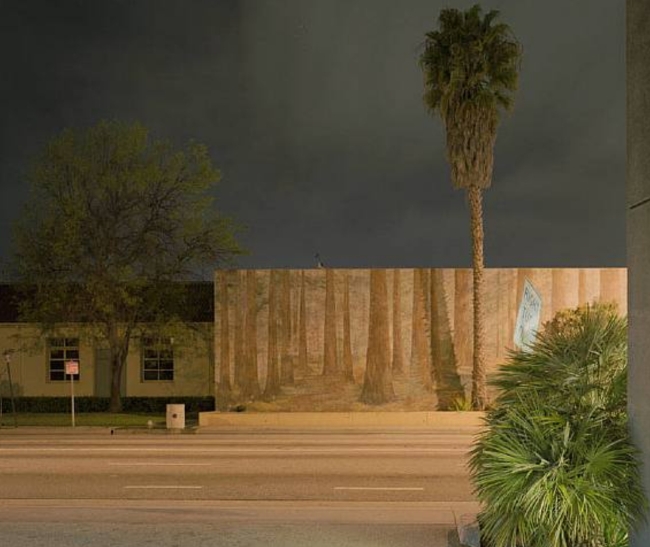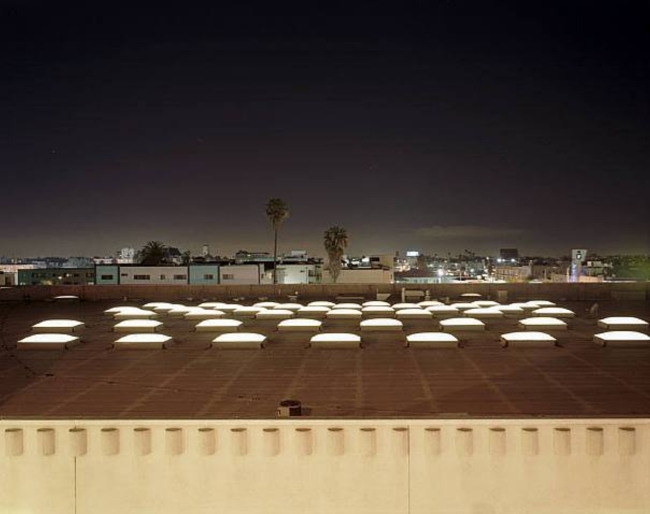What do you get when you cross a dissatisfied urban planner and a fine arts photographer? What you get is David Allee.
Allee earned a BA in Government and Economics from Cornell University in 1991, and went to work as an urban and environmental planner. Photography, at first, was just a hobby. Until…
“As I became more entrenched in my cubicle life, I thought, why not go after something that I really loved to do?”
He earned an MFA in photography from New York City’s School of Visual Arts in 2001. It shouldn’t be a surprise that his interest and knowledge of urban design shaped his fine art photography.

Allee’s new series is called Cross Lands. In a way, these photographs exist at the very weird intersection of surrealism and urban planning. Taken at night with long exposures (up to twenty minutes) using a large format camera, these photographs have an aura of illusion and unnaturalness. They are somehow both familiar and unfamiliar at the same time. They seem ordinary and commonplace (because the subjects are ordinary and commonplace), and yet there is a distinct contradictory aura of unreality about them.
Only part of that is a result of the hour at which the photographs were taken. Night often makes the mundane seem strange; and, certainly, the commingling of twilight and artificial light enhances that strangeness. But the weirdness is compounded by the collision of the inorganic with the organic. Buildings, condominiums, highways, large-scale signs, strip malls–they’ve all been gracelessly jammed into the landscape with absolutely no regard for context, with no consideration for the fact that people have to live with the result.

Consider the condominiums in the photograph above. Notice the care that was given to the landscaping of the tiny yard, observe the apparent desire to give the façade a pleasing diversity of appearance, notice the elegant little porticoed entryway. And then take note of the obvious fact that this condo is situated maybe forty feet away from a noise reduction barrier of an interstate highway. The result isn’t merely contradictory; it’s deranged.
Similarly, the photograph below is contradictory and ironic. A palm tree in front of a fence painted to depict a forest of tree trunks, beside an empty street that’s probably usually busy with traffic. The stillness of the photo contrasts with what we know of urban traffic.

The contradictions that grow out of the strange hour and the lunatic urban design are heightened by the fact that most of the photographs in the Cross Lands series are of places intended to be full of people. Parks, city streets, housing, shops. And yet, because of the hour, people are conspicuously absent. There is what has been described as “a grand and overpowering silence” to Allee’s images., a sense of anomic isolation, a rootless feeling of being disconnected and adrift from the landscape that’s both visually appealing and emotionally disconcerting.
Although Allee’s fine art photography is successful, he’s probably better known in New York City circles as an architectural photographer. He regularly shoots photos for New York Magazines to illustrate articles ranging from a piece on the tenement building in which Peter Parker had his apartment in the movie Spiderman 2 to the selling of the furnishings of Le Cirque. Allee was also commissioned as the principal photographer for City Art, a book and exhibition examining two decades of public art in New York City.

That work pays the rent. Allee’s fine art photographs feed the soul. His background in urban planning has given him an almost preternatural eye for the incongruous beauty that grows out of the ugliness of bad urban design. David S. Allee could be said to be the Diane Arbus of architectural photography. His Cross Lands series is powerful, amusing, disturbing, lovely, and at the same time it’s a successful polemic against a concept of urban planning that doesn’t take people into consideration.
